In retrospective studies the odds ratio provides an estimate of relative risk You should take special care to avoid sources of exact confidence interval for odds ratio, odds ratio metaanalysis and conditional logistic regression Cohort studies Cohort studies are usually but not exclusively prospective, the opposite is true for casecontrol studies The following notes relateThe odds ratio supports clinical decisions by providing information on the odds of a particular outcome relative to the odds of another outcome In the endocarditis example, the risk (or odds) of dying if treated with the new drug is relative to the risk (odds) of dying if treated with the standard treatment antibiotic protocol Relative risk assessment statistics are particularly suited It usually means the multiple of risk of the outcome in one group compared with another group and is expressed as the risk ratio in cohort studies and clinical trials When the risk ratio cannot be obtained directly (such as in a casecontrol study), the odds ratio is calculated and often interpreted as if it were the risk ratio Subsequently, the term relative risk commonly

Calculation Of Relative Risks Rr And Odd Ratios Or Download Table
Odds ratio vs relative risk cohort
Odds ratio vs relative risk cohort-Now that you have a general idea of what odds ratio and relative risk are you need to know when to use them They don't always just ask you to calculate one or the other Sometimes questions on Step 1 also require you to figure out which type of calculation is needed based on the situation In clinical trials and cohort studies we use relative risk to compare the incidence of health If the relative risk is 1, the tutoring made no difference at all If it's above 1, then the tutored group actually had a higher risk of failing than the controls Odds Ratio The odds ratio is the ratio of the odds of an event in the Treatment group to the odds of an event in the control group The term 'Odds' is commonplace, but not




Gordis 12 Biostatistics Risk Relative Risk Odds Ratio Flashcards Quizlet
Odds ratios (OR) are commonly reported in the medical literature as the measure of association between exposure and outcome However, it is relative risk that people more intuitively understand as a measure of association Relative risk can be directly determined in a cohort study by calculating a risk ratio (RR) In casecontrol studies, and 2) Cohort studies will have information about persontime at risk, and so the desired outcomes are often incidence rates, population attributable risk, or risk ratios The odds ratio estimate for rare outcomes will approximately estimate the risk ratio in this design, but it makes more sense to compute the risk ratio directlyThe relative risk and the odds ratio are measures of association between exposure status and disease outcome in a population In our cohort study, 80 participants happen to be steroid users, while 240 participants are nonsteroid users The 2×2 table with the exposure status and disease status can be seen below Example 1 Amongst the steroid users, 5 out of 80 people suffered a
RELATIVE RISK AND ODDS RATIO The relative risk (also known as risk ratio RR) is the ratio of risk of an event in one group (eg, exposed group) versus the risk of the event in the other group (eg, nonexposed group) The odds ratio (OR) is the ratio of odds of an event in one group versus the odds of the event in the other group An RR (or OR) of 10 indicates that there is noIn our example above, p wine and p no_wine were 0009 and 0012 respectively, so the odds ratio was a good approximation of the relative risk OR = 0752 and RR = 075 If the risks were 08 and 09, the odds ratio and relative risk will be 2 very different numbers OR = 044 and RR = 0 Relative risk vs Odds ratio RR vs OR The figure on the left depicts risk (a probability), the number of patients with the risk factor and the outcome in the numerator, and all patients with the risk factor in the denominator (Risk = 2/(8 2) = 2/10 = %) The figure on the right depicts odds, the number of patients with the risk factor and the outcome in the numerator
Odds ratio vs Risk Ratio (Relative Risk) Odds ratios are not very intuitive to understand, but are sometimes used due to convenience in plugging them in other statistics Where possible relative risk (risk ratio) should be reported due to it being much more a intuitive measure of effectiveness Still, odds ratios are widely used in fields like epidemiology, clinical research, including In medical literature, the relative risk of an outcome is often described as a risk ratio (the probability of an event occurring in an exposed group divided by the probability in a nonexposed group) Certain types of trial designs, however, report risk as an odds ratio This format is commonly expressed in cohort studies using logistic regressionCould someone explain why odds ratios are used in case control studies where as relative risk is used in RCT and cohort studies?



Research Statistics Basics Contents 1 Basic Concepts 2 References Basic Concepts Null Hypothesis The Hypothesis That The Independent Variable Has No Effect On The Dependent Variable For Example Steroids Do Not Improve Outcomes In Ards Would Be
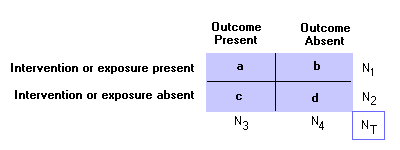



Epidemiology Glossary Physical Diagnosis Skills University Of Washington School Of Medicine
I understand that odds ratio is the ratio is the odds of two groups (ie positive outcomes/negative outcomes), where as relative risk is the ratio of risk of two groups (ie positive outcomes/all outcomes) But why are they appropriate for different types of studiesThe quote surely just means to say that the odds ratio is a relative risk measure It is only appropriate, therefore, to use RR for prospective cohort studies Odds compare events with nonevents If a horse wins 2 out of every 5 races, its odds of winning are 2 to 3 (expressed as 23) An odds ratio is a ratio of ratios It compares the presence to absence of an exposure given that It is the standard way of risk assessment in cohort studies The Odds ratio (OR) is a proxy estimate of the relative risk Or is applied in casecontrol studies Cite 5
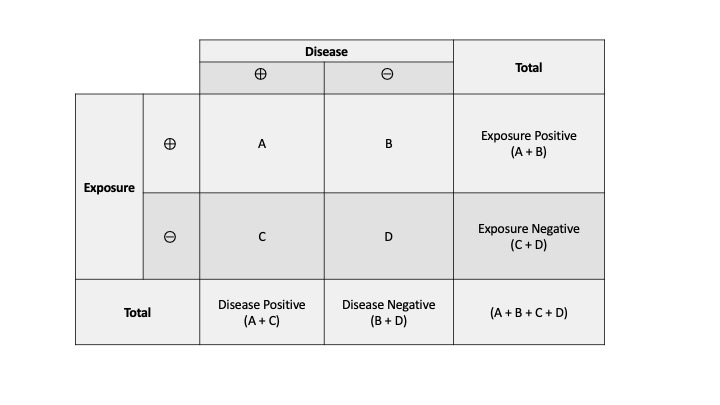



Measures Of Association Stats Medbullets Step 1




How To Calculate Relative Risk 3 Steps With Pictures Wikihow
Odds ratio vs relative risk?Understanding Relative Risk, Odds Ratio, and Related Terms As Simple as It Can Get Chittaranjan Andrade, MD ABSTRACT Risk, and related measures of effect size (for categorical outcomes) such as relative risks and odds ratios, are frequently presented in research articles Not all readers know how these statistics are derived and interpreted, nor are all readers aware of theirIn epidemiological terms, the odds ratio is used as a point estimate of the relative risk in retrospective studies Odds ratio is the key statistic for most casecontrol studies In prospective studies, Attributable risk or risk difference is used to quantify risk in the exposed group that is attributable to the exposure In retrospective studies, attributable risk can not be calculated




Understanding Relative Risk Odds Ratio And Related Terms As Simple As It Can Get Psychiatrist Com




Relative And Attributable Risks Absolute Risk Involves People
Odds ratios, relative risk, and β0 from the logit model are presented Keywords st0041, cc, cci, cs, csi, logistic, logit, relative risk, case–control study, odds ratio, cohort study 1 Background Popular methods used to analyze binary response data include the probit model, discriminant analysis, and logistic regression Probit regression is based on the probability integral Here's the key Relative Risk looks to the future for the effect of a particular cause hence it is used in prospective studies say a cohort study Lets compare the above with Odds Ratio The Odds Ratio can be addressed by asking te following question How many times more likely is a diseased group to have been exposed to a risk factor as compared to a nondiseasedThe Odds Ratio The odds of disease in the exposed group are 7/10, and the odds of disease in the nonexposed group are 6/56 If I compute the odds ratio, I get (7/10) / (5/56) = 656, very close to the risk ratio that I computed from data for the entire population We will consider odds ratios and casecontrol studies in much greater depth in



Relative Risk And Odds Ratio Usmle The Journey




Odds Ratio Osmosis
Odds ratio vs relative risk Odds ratios and relative risks are interpreted in much the same way and if and are much less than and then the odds ratio will be almost the same as the relative risk In some sense the relative risk is a more intuitive measure of effect size Note that the choice is only for prospective studies were the distinction becomes important in cases ofRelative Risk and Odds Ratio for the obese 3) Overall, you can see that decreasing the baseline incidence will decrease the odds ratio (300 in those who are nonobese versus 129 in those who are obese) Obviously, these results run counter to expected results, putting the onus on the researcher to justify them Similarly, you should find that increasing the incidence will increaseThe relative risk (RR) and the odds ratio (OR) are the two most widely used measures of association in epidemiology The direct computation of relative risks is



1




1 Relative Risks Odds Ratios Or Hazard Ratios Of Risk Factors For Download Table
Risk difference, risk ratio, and odds ratio as measures of effects in cohort design A cohort study design pursues the effect of exposure such as treatment, prospectively In the cohort study, we extract an adequate size of a random sample from the target population, then randomly assign the subjects into either the expose group or unexposed groupThis is known as the 'invariance of the odds ratio' In contrast, the relative risk does not possess this mathematical invertible property when studying disease survival vs onset incidence This phenomenon of OR invertibility vs RR noninvertibility is best illustrated with an example Suppose in a clinical trial, one has an adverse event risk of 4/100 in drug group, and 2/100 in placebo In cohort studies as well as in clinical trials, RR (the cumulative incidence ratio or the incidence density ratio) can be estimated directly Therefore, there is no need to use OR to represent the effect size In contrast in casecontrol studies, incidence data is usually not available Therefore, the ratio of the odds of exposure among cases to the odds of exposure among non




Relative Risk Wikipedia




Calculate Relative Risk With 95 Confidence Intervals
Risk factor for the disease • Less than 10 indicates that the odds of exposure among casepatients are lower than the odds of exposure among controls The exposure might be a protective factor against the disease The magnitude of the odds ratio is called the "strength of the association" The further away an odds ratio is from 10, the more likely it is that the Odds ratio vs risk ratio You know the difference between risk and odds A risk is the proportion of subjects with an event in a total group of susceptible subjects Thus, we can calculate the risk of having a heart attack among smokers (infarcted smokers divided by the total number of smokers) and among nonsmokers (the same, but with non Odds ratios are a common measure of the size of an effect and may be reported in casecontrol studies, cohort studies, or clinical trials Increasingly, they are also used to report the findings from systematic reviews and metaanalyses Odds ratios are hard to comprehend directly and are usually interpreted as being equivalent to the relative risk Unfortunately, there is a



Interpretation Of Genetic Association Studies Markers With Replicated Highly Significant Odds Ratios May Be Poor Classifiers



2
The risk ratio In practice, risks and odds for a single group are not nearly as interesting as a comparison of risks and odds between two groups For risk you can make these comparisons by dividing the risk for one group (usually the group exposed to the risk factor) by the risk for the second, nonexposed, group This gives us the risk ratio Table 1 Relative risk (RR) vs Odds Ratio (OR) vs Hazard Ratio (HR) HRs are in tandem with survivorship curves, which show the temporal progression of some event within a group, whether that event is death, or contracting a disease In a survivorship curve, the vertical axis corresponds to the event of interest and the horizontal axis corresponds to time The hazard Other O does not have an R (cOhort), which means the other group does not have the risk factor Compare the two to see who gets the disease How to remember that case control studies measure odds ratio and cohort studies measure relative risk You take surgical "cases" to the "OR" (Operating room) Case control study Odds Ratio cohoRRRRRRt




Critical Numbers Living With Risk At The End



2
As I thought you used relative risk for cohort and odds ratio for casecontrol studies?About Press Copyright Contact us Creators Advertise Developers Terms Privacy Policy & Safety How works Test new features Press Copyright Contact us CreatorsCrosssectional, cohort, and randomized controlled trial designs with binary outcomes can often be summarized by estimating odds ratios or risk ratios If the study outcome is sufficiently rare among exposed and unexposed study subjects, the odds ratio for the exposure–outcome association will closely approximate the risk ratio But if the outcome is common and the risk




Relative Risk And Absolute Risk Definition And Examples Statistics How To



What Is The Difference Between The Risk Ratio Rr And The Odds Ratio Or Quora
An odds ratio is a useful measure of association In a cohort study, the relative risk can be calculated directly In a casecontrol study the relative risk cannot be calculated directly, so an odds ratio is used instead Attributable Risk Concept of Attributable Risk Attributable Risk for an Exposed Group Attributable Risk for an Exposed Group (cont) Calculation for Proportional Examples of measures of association include risk ratio (relative risk), rate ratio, odds ratio, and proportionate mortality ratio Risk ratio Definition of risk ratio A risk ratio (RR), also called relative risk, compares the risk of a health event (disease, injury, risk factor, or death) among one group with the risk among another group It does so by dividing the risk (incidence We illustrated both relative risks and odds ratios using bar charts, then looked at the types of study for which each statistic is suited We demonstrated calculation of relative risks and odds ratios through analysis of tabled data from a recent published longitudinal study, using a 2 × 2 table and R, the opensource statistical programming language Simple rules for when and how




Measures Of Effect Relative Risks Odds Ratios Risk Difference And Number Needed To Treat Kidney International




Event Based Measures Of Effect Size Asha Journals Academy
The relative merits of risk ratios and odds ratios Arch Pediatr Adolesc Med 09 May;163(5) doi There is debate regarding the merits of risk ratios compared with odds ratios for the analysis of trials and cohort and crosssectional studies with common outcomes Odds ratios are conveniently symmetrical with regard to the outcome definition;4 comments share save hide report 84%Academic Question Hi, Been reading through a research paper that used a prospective cohort study, but in the results table for measures of association, the odds ratio was used instead of relative risk Is this study valid?
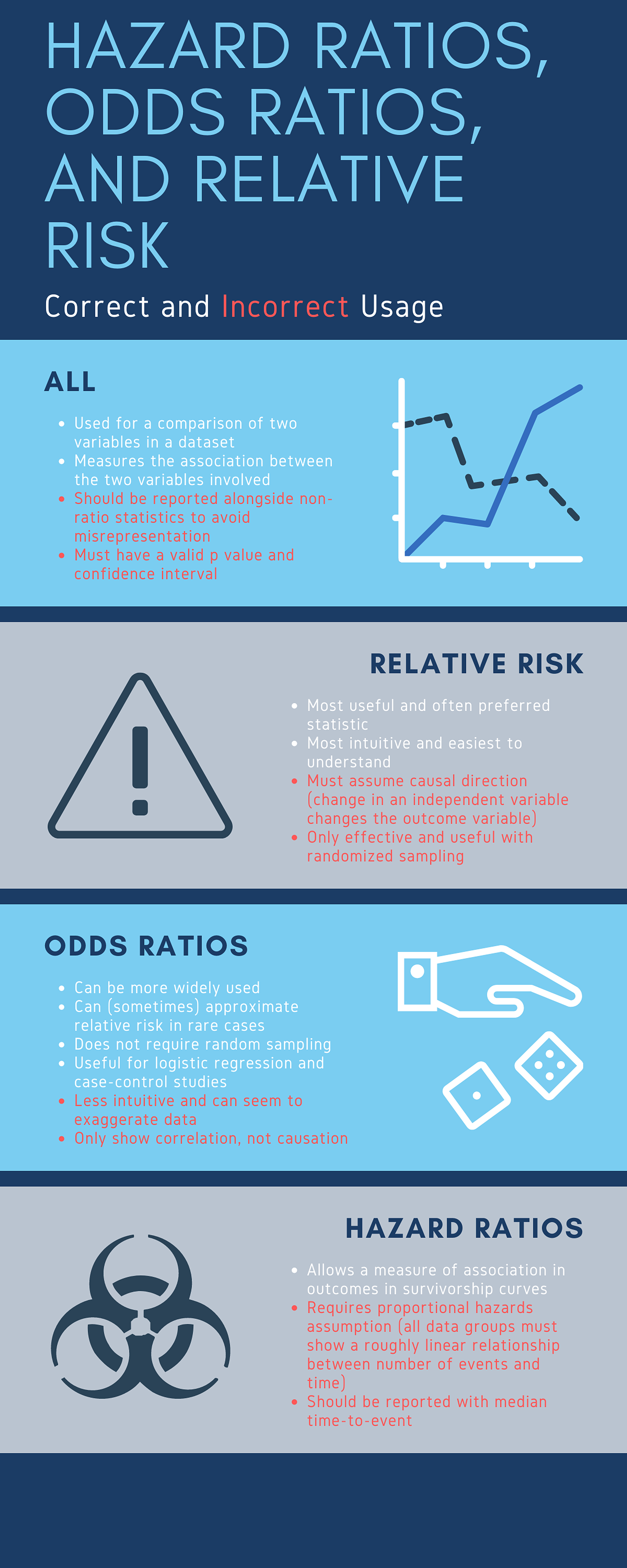



Cureus What S The Risk Differentiating Risk Ratios Odds Ratios And Hazard Ratios



1
The odds ratio will estimate the average change in odds (the average odds ratio) among exposed individuals only when all individual odds ratios are equal and all individual outcome risks without exposure are equal 1;RR and OR are commonly used measures of association in observational studies In this video I will discuss how to interpret them and how to apply them to patThe relative risk (RR) or risk ratio is the ratio of the probability of an outcome in an exposed group to the probability of an outcome in an unexposed group Together with risk difference and odds ratio, relative risk measures the association between the exposure and the outcome Statistical use and meaning Relative risk is used in the statistical analysis of the data of ecological, cohort



2




Definition And Calculation Of Odds Ratio Relative Risk Stomp On Step1
This implausible scenario is shown in Table 5, where collapsed counts for low (or high) risk subjects only produce a 2 × 2 table with an odds ratios of 400 It is assumed that, if the prevalence of the disease is low, then the odds ratio approaches the relative risk Case control studies are relatively inexpensive and less timeconsuming than cohort studies In this case the odds ratio (OR) is equal to 16 and the relative risk (RR) is equal to 865 The risk ratio (RR), also called the relative risk, is the ratio of the probability of cancer in smokers to the probability of cancer in nonsmokers RR = (a/(ab))/(c/(cd)) = (a(cd))/(c(ab)) Given that you know a, b, c, and d, you can compute either of these metrics Yet odds ratio is strongly preferred as the "right" metric to report in almost all scenarios That
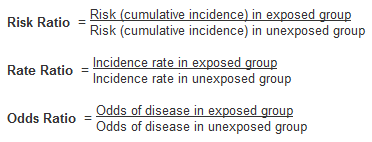



Numerators Denominators And Populations At Risk Health Knowledge
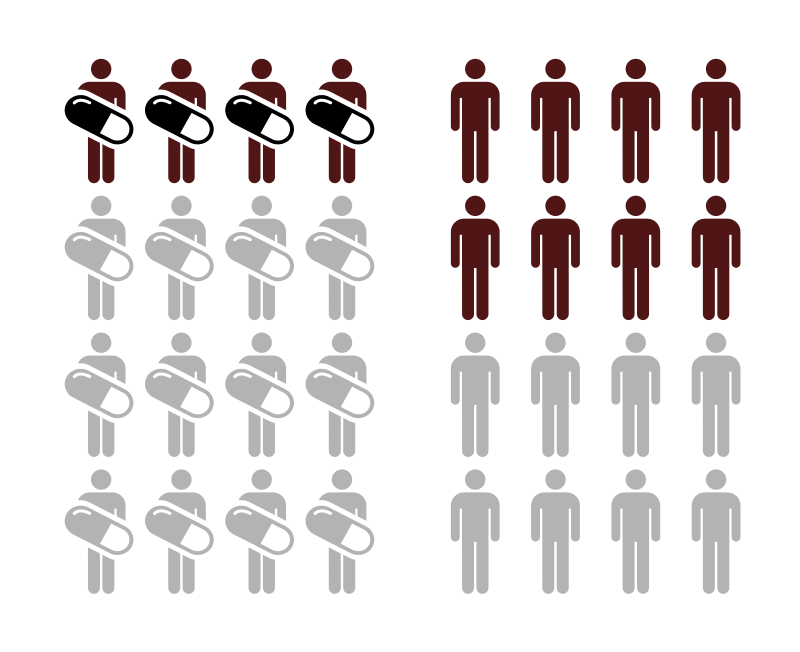



Hkzto9hkc3ymim
The odds ratio for outcome The relative risk (or risk ratio) is an intuitive way to compare the risks for the two groups This prospective cohort study was used to investigate the effects of hormone replacement therapy (HRT) on coronary artery disease in postmenopausal women The investigators calculated the incidence rate of coronary artery disease in postmenopausal




Measures Of Effect Relative Risks Odds Ratios Risk Difference And Number Needed To Treat Kidney International
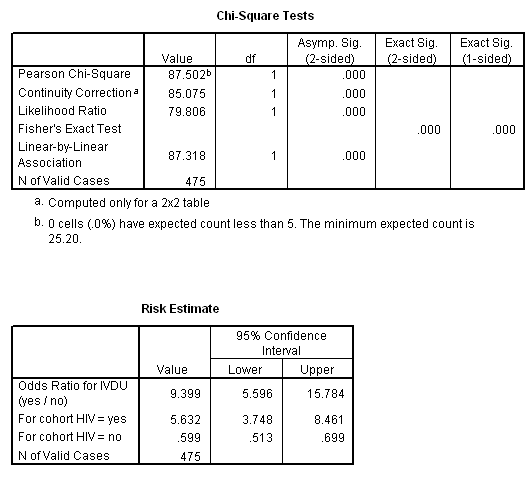



Marg Innovera
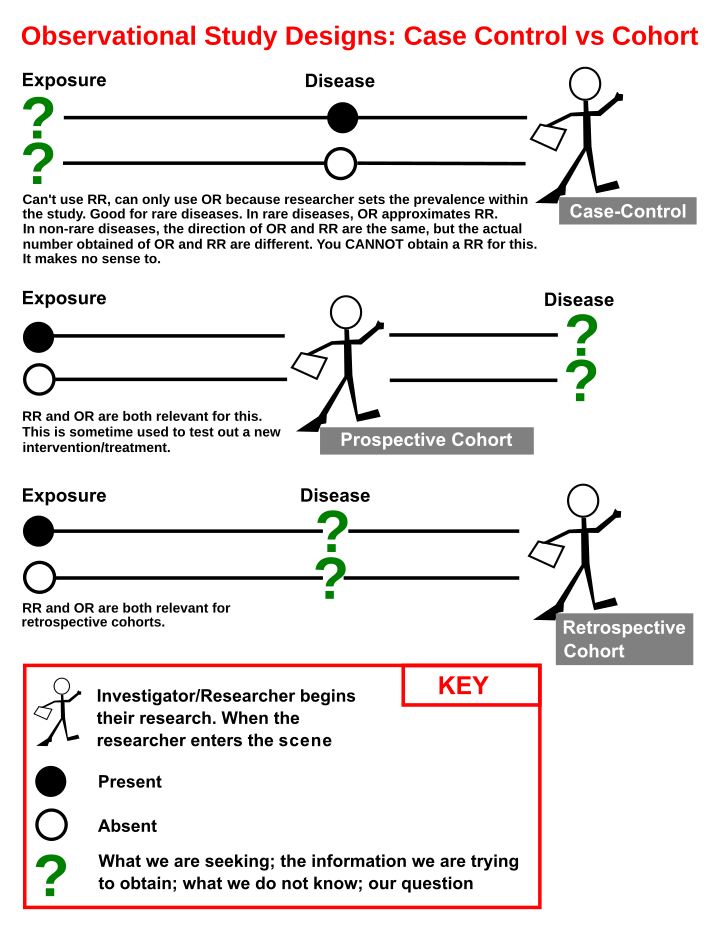



Retrospective Cohort Study Wikiwand




Odds Ratio Osmosis




Hazard Ratio Vs Odds Ratio ただの悪魔の画像




Estimating Risk




Reporting The Results Sage Research Methods
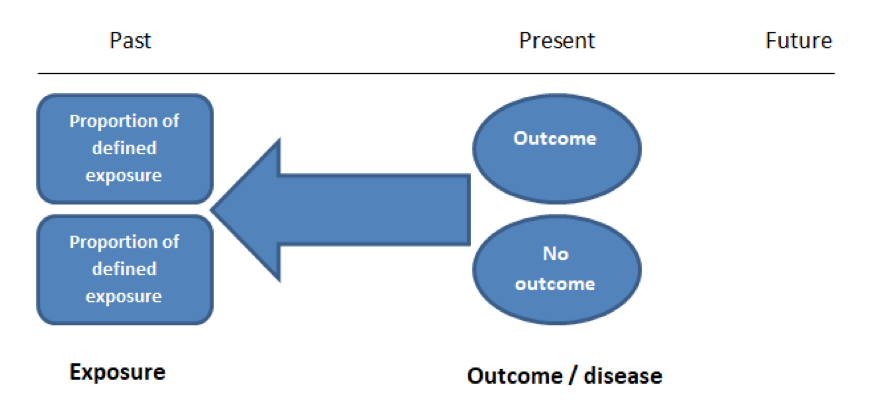



Case Control And Cohort Studies A Brief Overview Students 4 Best Evidence




How To Use Spss For Contingency Table Relative Risk Odds Ratio




Relative Risk Odds Ratios Youtube




A Most Odd Ratio Interpreting And Describing Odds Ratios Abstract Europe Pmc
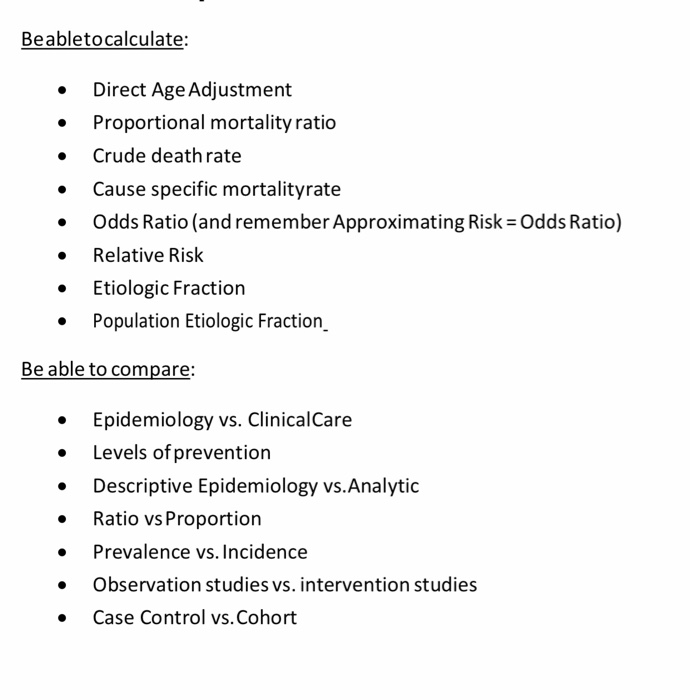



Beabletocalculate Direct Age Adjustment Chegg Com



Relative Risk Ratios And Odds Ratios




Relative Risk Or Odds Ratio For Cardiovascular Disease Incidence Download Scientific Diagram



Case Control Study Vs Cohort Study Pp Made Easy On Vimeo




Cureus What S The Risk Differentiating Risk Ratios Odds Ratios And Hazard Ratios
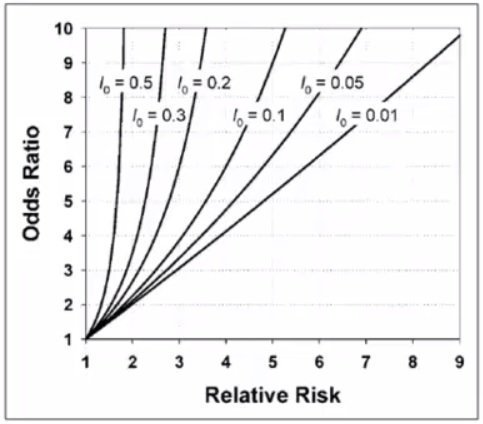



Cecile Janssens A Reminder That Odds Ratios Massively Overestimate Relative Risks When Outcome Is Common In The Population Or By Study Design E G Case Control Studies Io Is Proportion Of Cases




Relative Risk And Odds Ratio




Chapter 6 Choosing Effect Measures And Computing Estimates Of Effect Cochrane Training




Module 4 Relative Risk Odds Ratio Flashcards Quizlet




Cohort And Case Con Revised




Research Techniques Made Simple Interpreting Measures Of Association In Clinical Research Sciencedirect
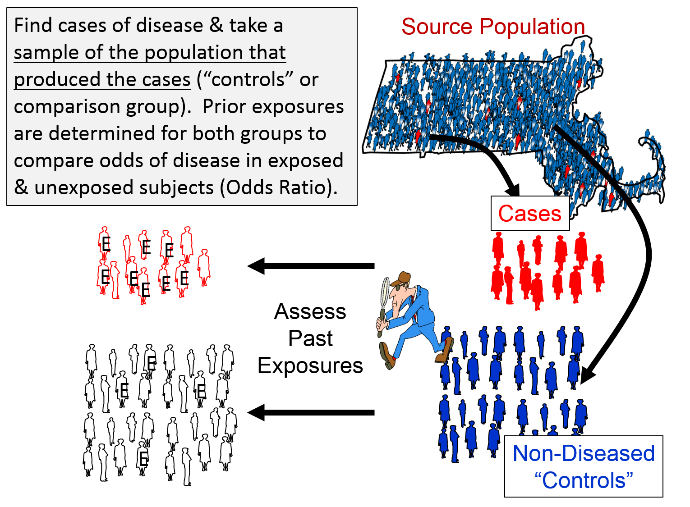



A Nested Case Control Study



2



Hierarchy Of Study Design Descriptive Studies Pp Made Easy In Population Perspective Made Easy On Vimeo



Definition And Calculation Of Odds Ratio Relative Risk Stomp On Step1




Pdf When To Use The Odds Ratio Or The Relative Risk Semantic Scholar




A Beginner S Guide To Interpreting Odds Ratios Confidence Intervals And P Values Students 4 Best Evidence



2




Believability Of Relative Risks And Odds Ratios In Abstracts Cross Sectional Study The Bmj
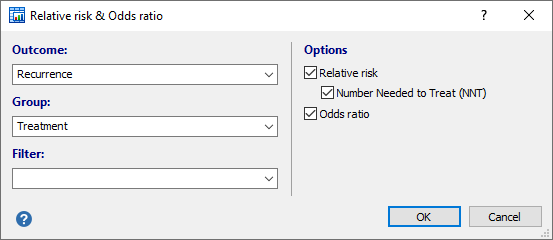



Relative Risk Odds Ratio




Calculation Of Relative Risks Rr And Odd Ratios Or Download Table




Calculate Relative Risk With 95 Confidence Intervals




A Beginner S Guide To Interpreting Odds Ratios Confidence Intervals And P Values Students 4 Best Evidence




Frontiers Odds Ratio Or Prevalence Ratio An Overview Of Reported Statistical Methods And Appropriateness Of Interpretations In Cross Sectional Studies With Dichotomous Outcomes In Veterinary Medicine Veterinary Science




Relative Risk Versus Odds Ratio Usmle Biostatistics 4 Youtube




Effect Sizes Basicmedical Key
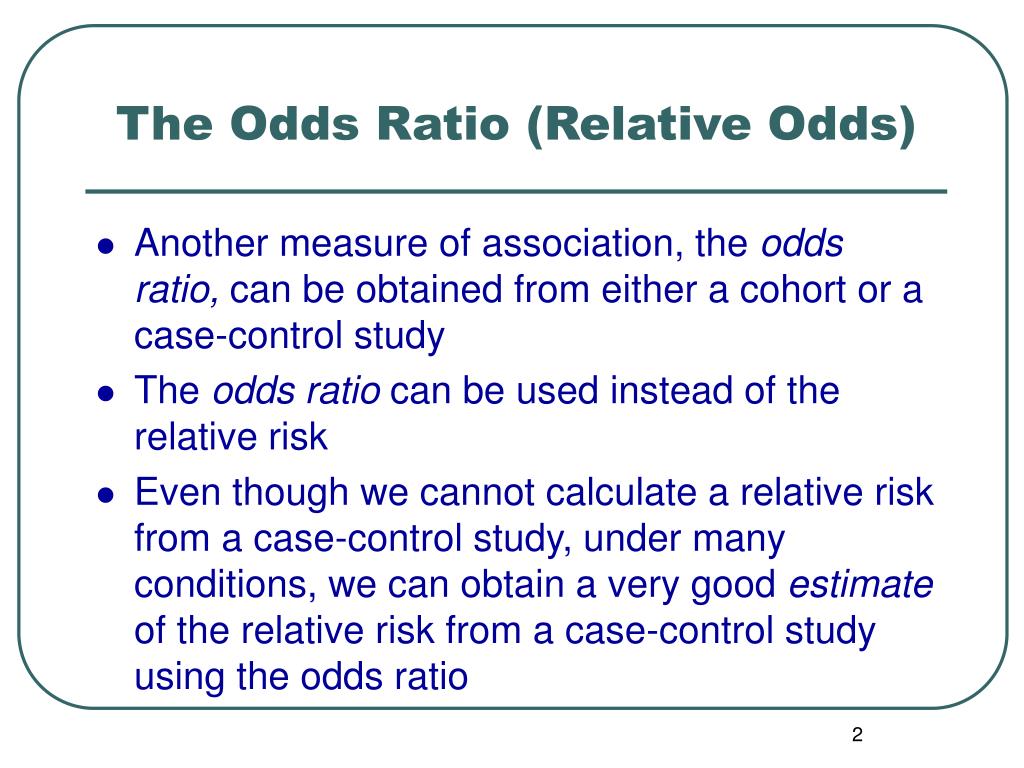



Ppt The Odds Ratio Relative Odds Powerpoint Presentation Free Download Id 6056




Definition And Calculation Of Odds Ratio Relative Risk Stomp On Step1
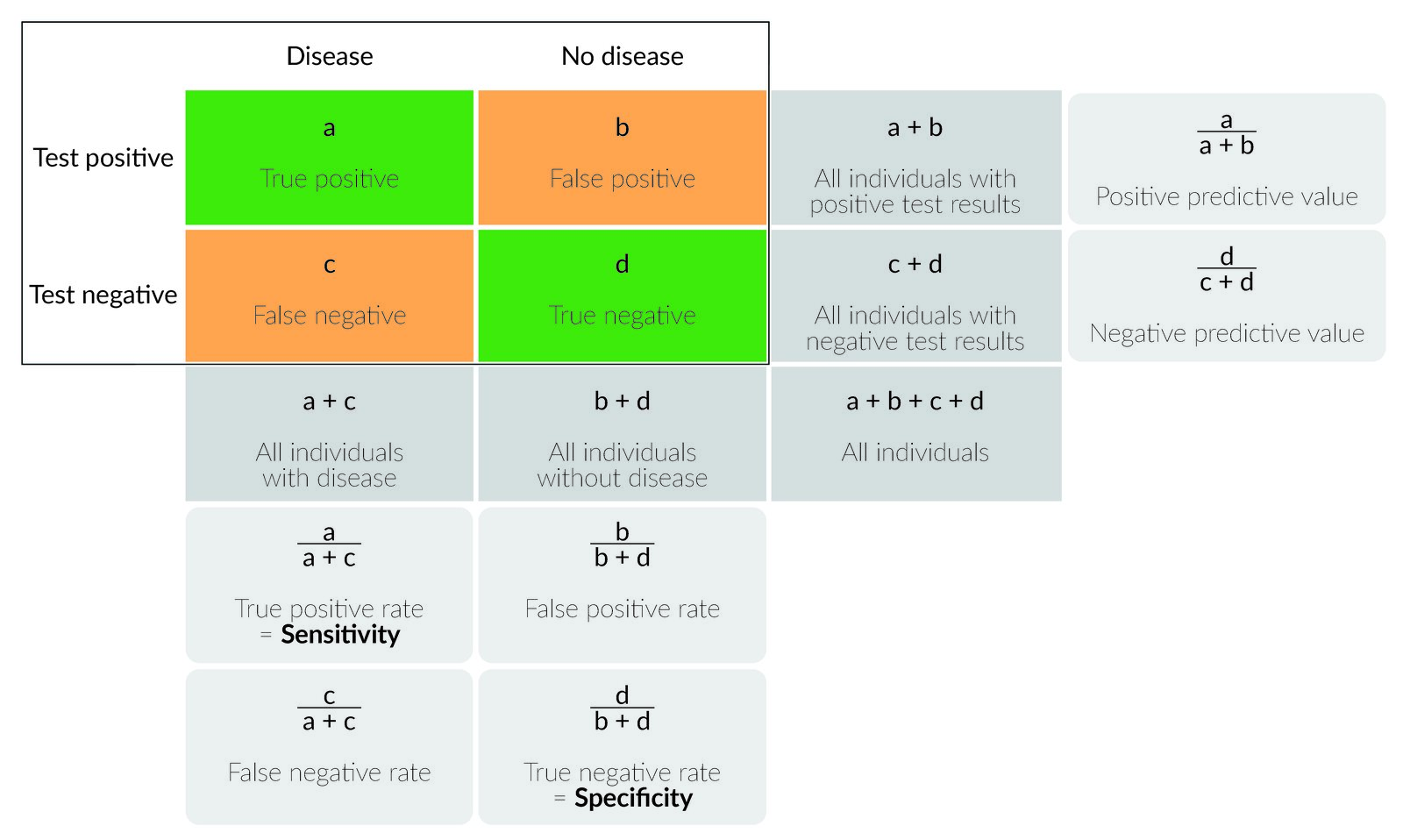



Epidemiology Knowledge Amboss




Gordis 12 Biostatistics Risk Relative Risk Odds Ratio Flashcards Quizlet




Pdf What S The Risk Differentiating Risk Ratios Odds Ratios And Hazard Ratios Semantic Scholar
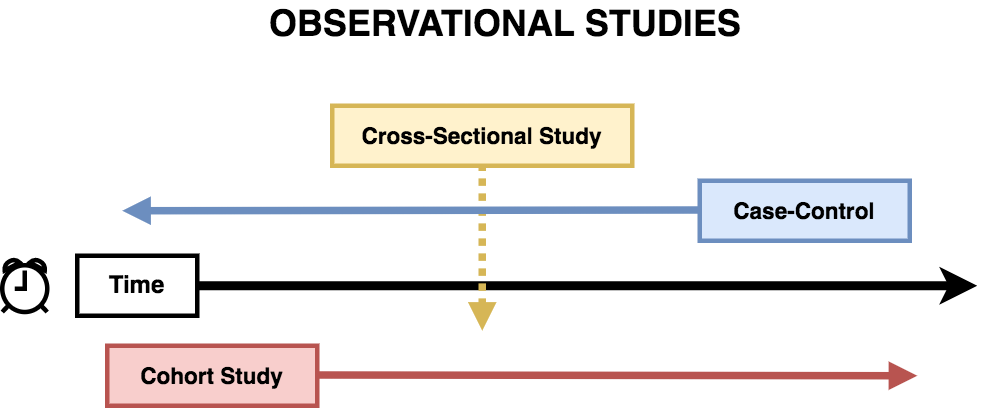



Critical Appraisal Psychdb




Risk Differences And Rate Differences
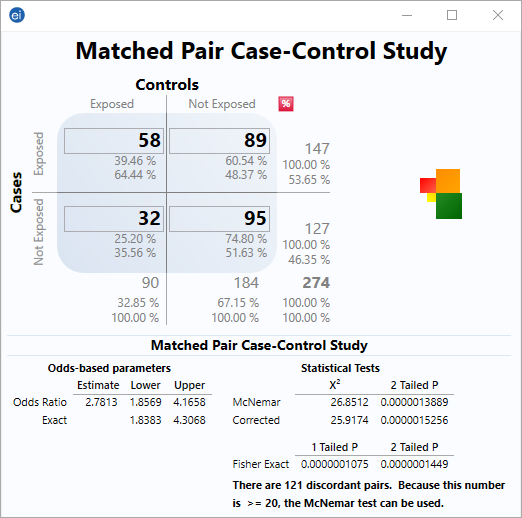



Matched Pair Case Control Statcalc User Guide Support Epi Info Cdc




Odds Ratio Relative Risk Calculation Definition Probability Odds Youtube




Glossary Of Research Terminology




3 5 Bias Confounding And Effect Modification Stat 507




What Does An Odds Ratio Or Relative Risk Mean



Relative Risk




Society For Birth Defects Research And Prevention



2




Research Techniques Made Simple Interpreting Measures Of Association In Clinical Research Sciencedirect
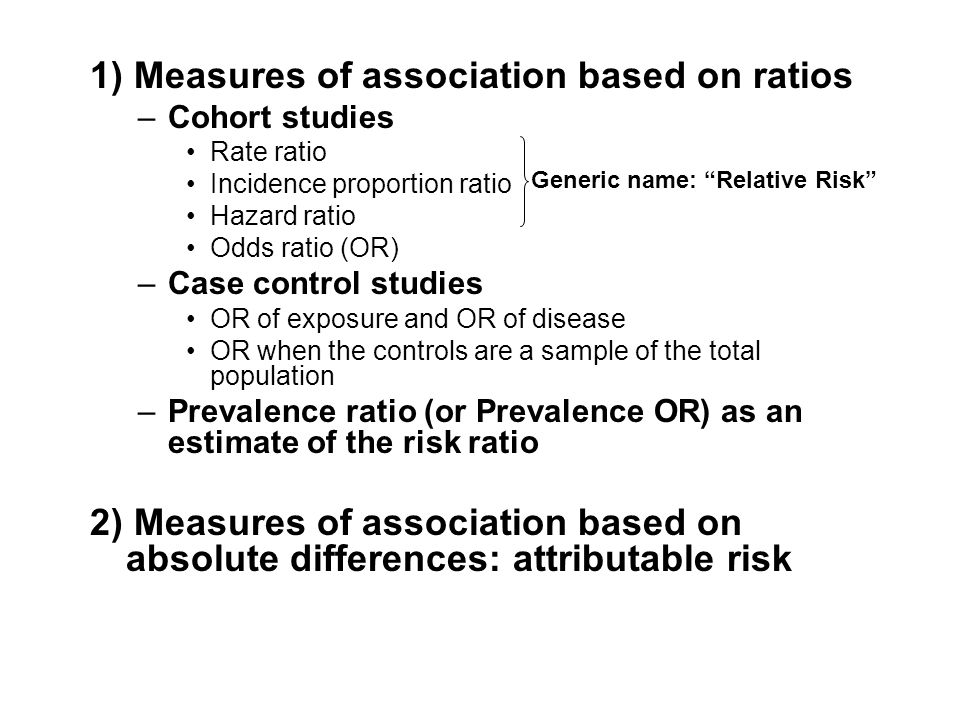



Measures Of Association Ppt Download



How To Explain The Difference Between Hazard Ratio And Relative Risk To A Layman Quora



2
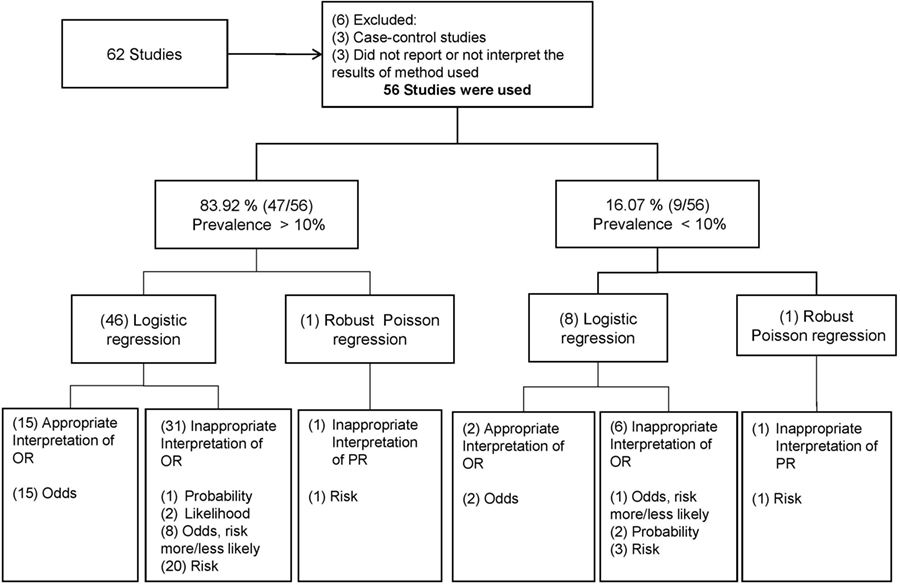



Frontiers Odds Ratio Or Prevalence Ratio An Overview Of Reported Statistical Methods And Appropriateness Of Interpretations In Cross Sectional Studies With Dichotomous Outcomes In Veterinary Medicine Veterinary Science




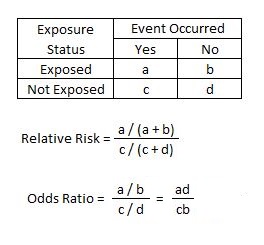



Relative Risk Article




Introduction To 2 X 2 Tables Epidemiologic Study Design And Measures Of Association Foundations Of Epidemiology




Relative Risks And Odds Ratios What S The Difference Mdedge Family Medicine



3




When Can Odds Ratios Mislead The Bmj




A Most Odd Ratio American Journal Of Preventive Medicine



2




How To Be Awesome At Biostatistics And Literature Evaluation Part Ii Tl Dr Pharmacy




Pdf When To Use The Odds Ratio Or The Relative Risk




Statistics For Afp Dr Mohammad A Fallaha Afp




Ppt The Odds Ratio Relative Odds Powerpoint Presentation Free Download Id 6056
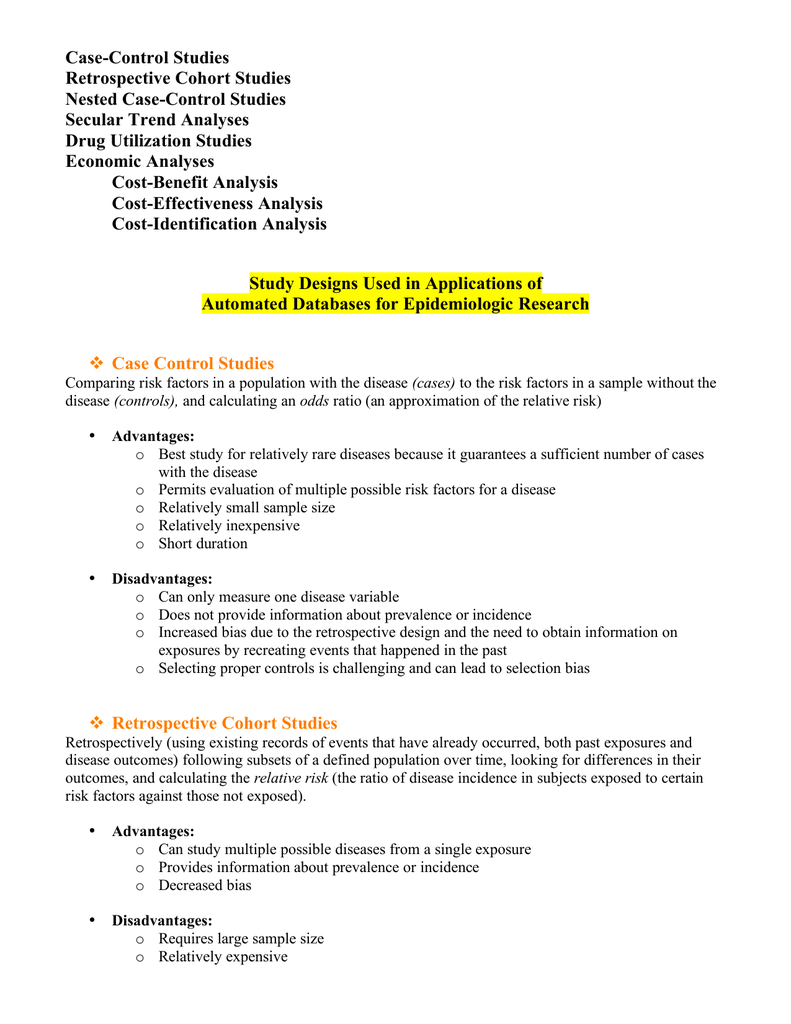



Case Control Studies Retrospective Cohort Studies Nested Case




Statistics Part 13 Measuring Association Between Categorical Data Relative Risk Odds Ratio Attributable Risk Logistic Regression Data Lab Bangladesh




Cohort Case Control Studies Http Www Slideshare Net Terryshaneyfelt7 What Does An Odds Ratio Or Rel Research Methods Observational Study Academic Research




Solved A Prospective Cohort Study B Case Control Study C Chegg Com




The Difference Between Relative Risk And Odds Ratios The Analysis Factor




Cph Exam Review Epidemiology Ppt Download




Main Points To Be Covered Measures Of Association In Case Control Studies Prevalent Controls Design Odds Ratio Vs Relative Risk And The Rare Disease Ppt Download



2




Using Odds Ratio In Case Control Studies Youtube



0 件のコメント:
コメントを投稿